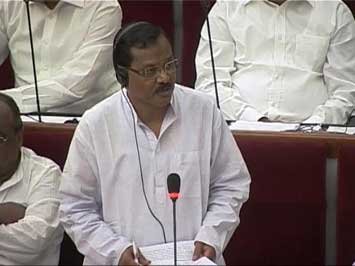Bhubaneswar, March 18: With industry and service sectors emerging as main drivers of growth, Odisha has achieved maximum poverty reduction by 24.6 per cent and the state grew impressively during 2014-15 with a real growth rate of 6.24 per cent at 2011-12 base.
This was part of the Economic Survey 2015-16 tabled in the state Assembly today by Finance Minister Pradip Kumar Amat. The per capita income of the State has also increased and there is a target of 4.95 per cent increase in the per capita income of 2015-16.
The report said the poverty declined in all regions and among all social classes like scheduled tribe, scheduled caste and other backward classes in the state.
“Poverty Gap Ratio that measures the magnitude of deprivation and helps in overall assessment of a region’s progress in poverty alleviation showed significant improvement from 17.7 in 2004-05 to 7.01 for rural areas in 2011-12 in Odisha,” the survey report said.
However, the report said wide regional, social and general disparties in development, continued to be a major concern for the state. All regions have not shared the gains of development in an equitable manner.
Noting that the state economy has been growing at comparatively higher rate since 2002-03 onwards, the report pointed out that the economy grew at an annual real average rate of 8.82 per cent at 2004-05 price during the 10th plan period and at 7.05 per cent in the 11th plan despite several challanges faced by the state.
It has, however, been observed that the higher growth in the economy in recent years has been contributed largely by the industrial sector followed by the service sector. The growth in agriculture sector has widely varied over the years, the survey said.
The sector has registered very low or negative growth in some years, the report said adding that major benefits of the growth in the service sector and the industrsial sector flow largely to those sections of population that are educated or have desired employable skills.
Regional, social and gender disparities existed in the state that need to be adequately addressed, the report suggested adding that some regions like KBK (Kalahandi- Bolangir-Koraput) region and some social groups like ST and SC communities, require special focus.
The report said the standard of living in Odisha has improved over the years with rise in real per capita income.
However, the continuing gap in the real per capita income between India and Odisha continues to be a matter of concern.
Angul tops the districts with per capital income of Rs 40,516. The PCI of 11 districts are higher than the state’s per capital income of Rs 24,542 during 2011-12. Nawrangpur and Malkangiri are the lowest brackets of per capital income with Rs 14,435 and Rs 16,313 respectively.
At the regional level mineral rich Sundergarh district leads the districts of Odisha by contributing maximum 8.79 per cent of total Gross Value Addition (GVA) of the state followed by Khurda district with 7.60 per cent share as per District Domestic Product estimates of 2011-12 at 2004-05 price at factor cost. Deogarh has lowest share of State GVA with 0.62 per cent followed by Boudh (0.67 per cent).



























